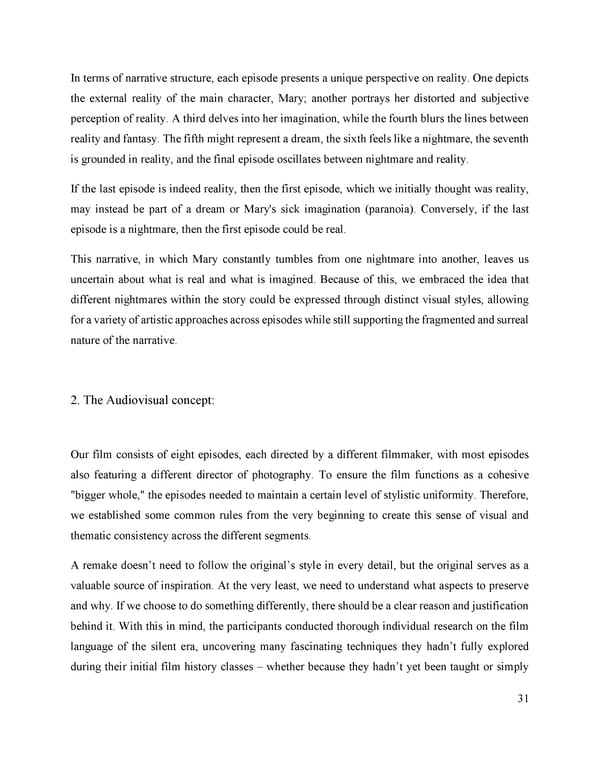In terms of narrative structure, each episode presents a unique perspective on reality. One depicts the external reality of the main character, Mary; another portrays her distorted and subjective perception of reality. A third delves into her imagination, while the fourth blurs the lines between reality and fantasy. The fifth might represent a dream, the sixth feels like a nightmare, the seventh is grounded in reality, and the final episode oscillates between nightmare and reality. If the last episode is indeed reality, then the first episode, which we initially thought was reality, may instead be part of a dream or Mary's sick imagination (paranoia). Conversely, if the last episode is a nightmare, then the first episode could be real. This narrative, in which Mary constantly tumbles from one nightmare into another, leaves us uncertain about what is real and what is imagined. Because of this, we embraced the idea that different nightmares within the story could be expressed through distinct visual styles, allowing for a variety of artistic approaches across episodes while still supporting the fragmented and surreal nature of the narrative. 2. The Audiovisual concept: Our film consists of eight episodes, each directed by a different filmmaker, with most episodes also featuring a different director of photography. To ensure the film functions as a cohesive "bigger whole," the episodes needed to maintain a certain level of stylistic uniformity. Therefore, we established some common rules from the very beginning to create this sense of visual and thematic consistency across the different segments. A remake doesn’t need to follow the original’s style in every detail, but the original serves as a valuable source of inspiration. At the very least, we need to understand what aspects to preserve and why. If we choose to do something differently, there should be a clear reason and justification behind it. With this in mind, the participants conducted thorough individual research on the film language of the silent era, uncovering many fascinating techniques they hadn’t fully explored during their initial film history classes – whether because they hadn’t yet been taught or simply 31
 Lost Analogue: Exploring Film, Music, and Interdisciplinary Methods in Education Page 31 Page 33
Lost Analogue: Exploring Film, Music, and Interdisciplinary Methods in Education Page 31 Page 33